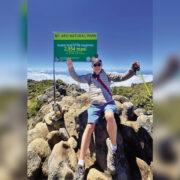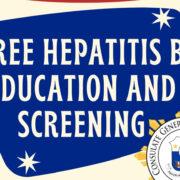WHILE the entire world watches and continues to hope and pray, that the seemingly unending chain reaction of problems in Japan’s tsunami-ravaged nuclear power complex will finally be put to a grinding halt – it is also time for us to stop, think and do a reality check on the imminent danger and effects that a radioactive fallout can inflict upon humankind.
In a public hearing of the Senate committee on health and demography on the effects of possible radiation exposure from the Fukushima nuclear plant, Dr. Romeo Quijano, University of the Philippines professor at the Dept. of Pharmacology and Toxicology, cited two studies from the French Nuclear Institute and the Norwegian Institute for Air Research. Both studies indicated that sooner or later, a radioactive fallout would be felt across the globe.
Wind and water are two very important factors in monitoring levels of radiation and according to Quijano, it is vital for all concerned government agencies to ensure that existing monitoring systems are upgraded and fully functional. But he also said that testing the air is not enough to see the effects of a radiation fallout in its entirety.
Soil deposition is also another way of acquiring accurate information because of the radionuclide accumulation in the soil. Food testing should be done, not only on food products from Japan but from other countries where contamination has already been detected.
According to Quijano, the standards set by the International Commission on Radiation Protection (ICRP) were not based on science.
“The ICRP is an independent, international organization with more than two hundred volunteer members from approximately thirty countries across six continents,” says their website. “These members represent the leading scientists and policymakers in the field of radiological protection.” Their body of work “helps prevent cancer and other diseases and effects associated with exposure to ionising radiation, and to protect the environment.” The organization began in 1928 – developing, maintaining and elaborating the International System of Radiological Protection which is “used worldwide as the common basis for radiological protection standards, legislation, guidelines, programmes and practice.”
In a report from ABS-CBN, Quijano also said that there is no such thing as a “safe dose” when it comes to radiation exposure. He emphasized that “even the ICRP recognizes that exposure below limits is not safe,” quoting an ICRP report which states: “The permissible doses can therefore be expected to produce effects [illnesses] that could be detectable only by statistical methods applied to large groups.” He also cited a study conducted in 1970 by Dr. Thomas Mancuso, professor of occupational health at the University of Pittsburgh, “who found a link between radiation and cancer.”
He said that the leak from the reactor at the Fukushima plant is significant and therefore, has already released a significant amount of radioactivity in the environment. The radiation level at the plant is already at 400 mSv (millisieverts) per hour — a level that, according to Quijano, can already cause acute radiation injury.
He also cited the presence of mixed-oxide (MOX) fuel (a mixture of plutonium and uranium oxides), which is about 6% of the core of unit 3 in the Fukushima plant. The presence of plutonium outside of the reactor indicates that there is a leak, said Quijano.
The Philippine Nuclear Research Institute (PNRI) reported that the radiation level in the Philippines is currently at 100 to 115 nSv (nano-sieverts) per hour — a level that is still considered safe. According to PNRI director Alumanda dela Rosa, the normal radiation level in Metro Manila is 85-115 nSv per hour.
While perusing through scientific jargon may prove challenging for ordinary citizens, the best we can do is to follow scientific advice and devise our own simple, preventive measures.
Quijano advises that maintaining a healthy lifestyle – adequate nutrition, sleep, exercise, avoidance of toxic chemicals – would help prevent radiation injuries. He also encourages the public to take oral detoxifying agents, anti-radiation herbs and minerals and multivitamin supplementation; to stay indoors when a radioactive fallout is likely to occur, especially in rainy weather; to keep doors and windows closed; and to wear carbon filter masks if exposure to radiation cannot be avoided.
(www.asianjournal.com)
(LA Weekend April 9-12, 2011 Sec A pg.12)




